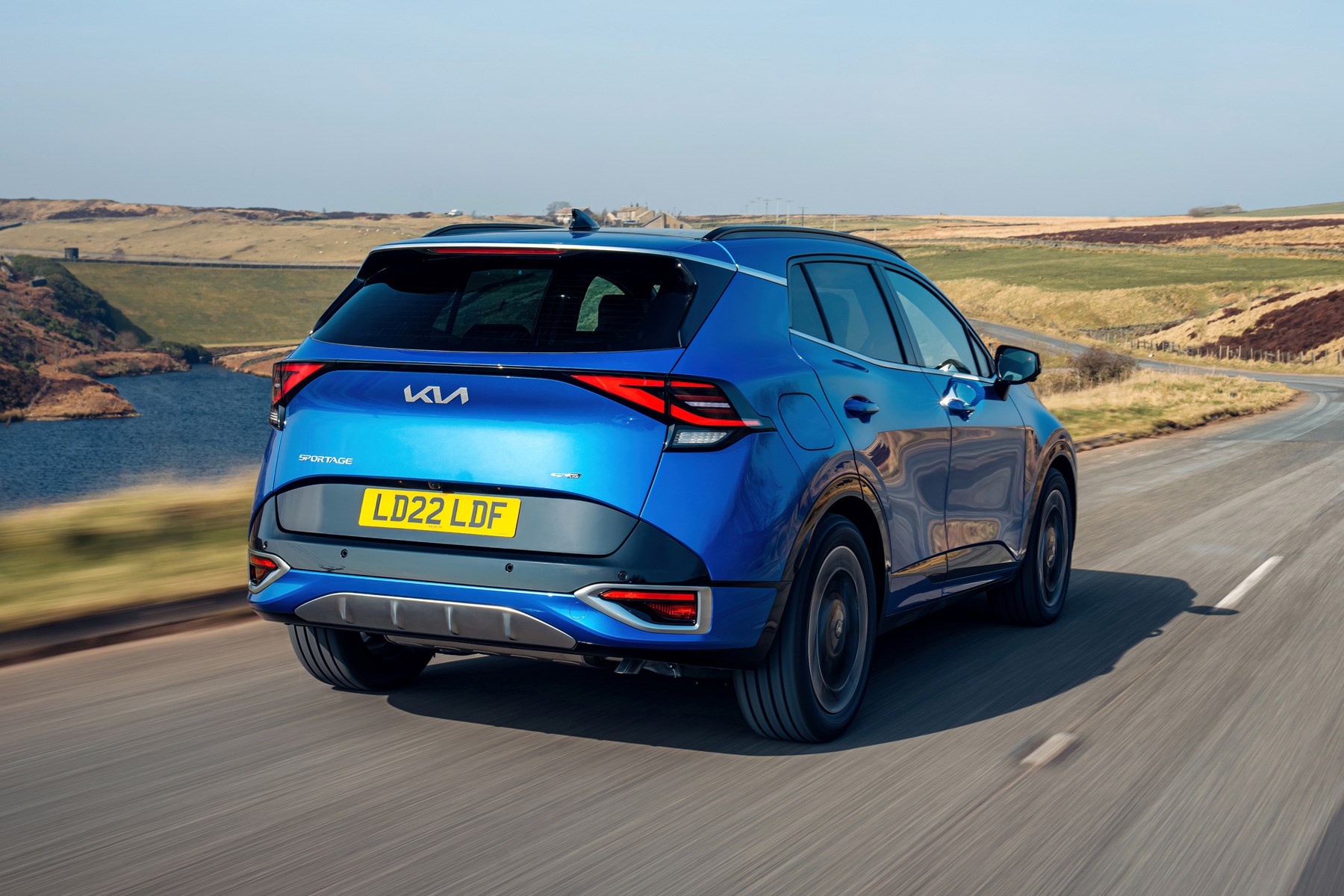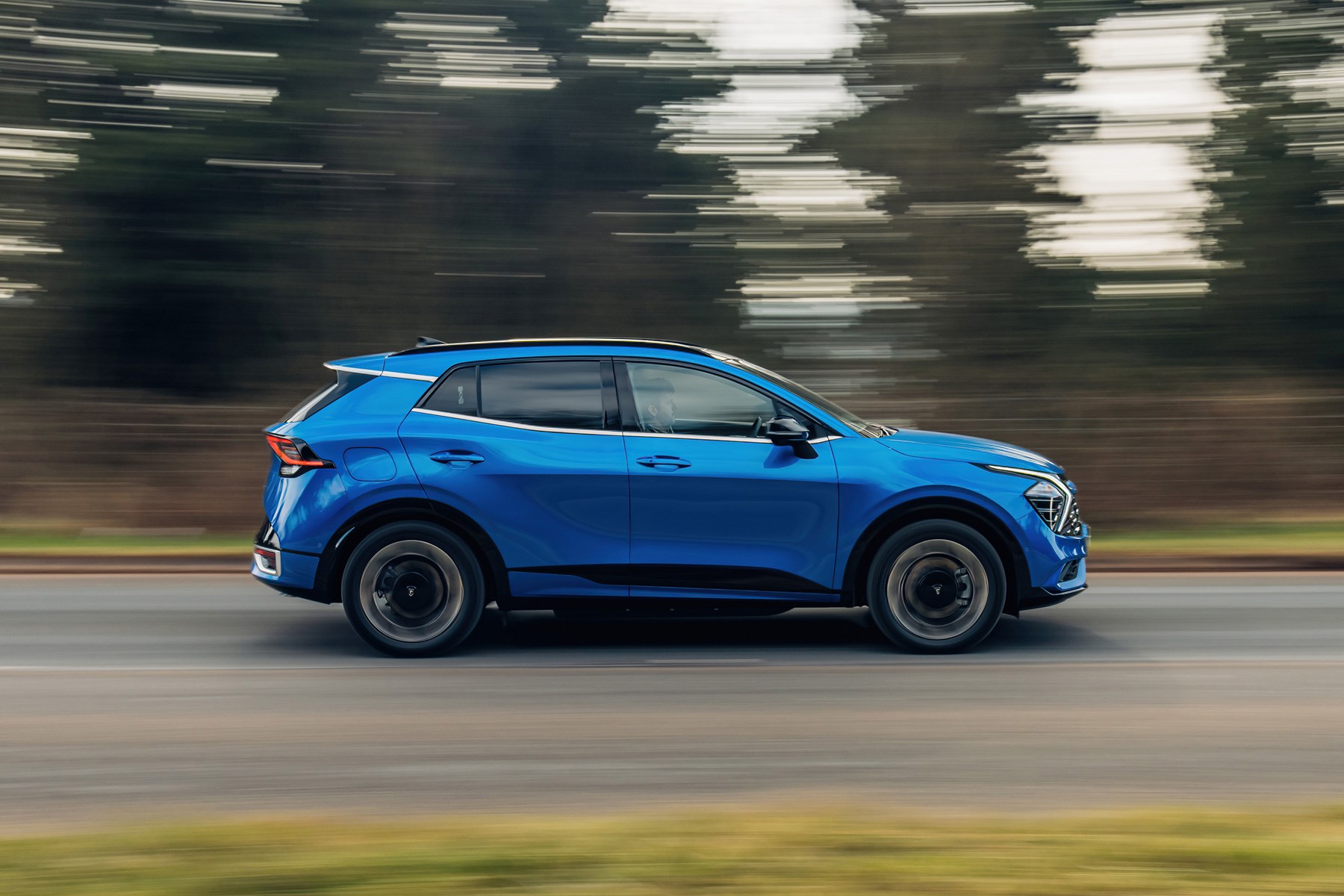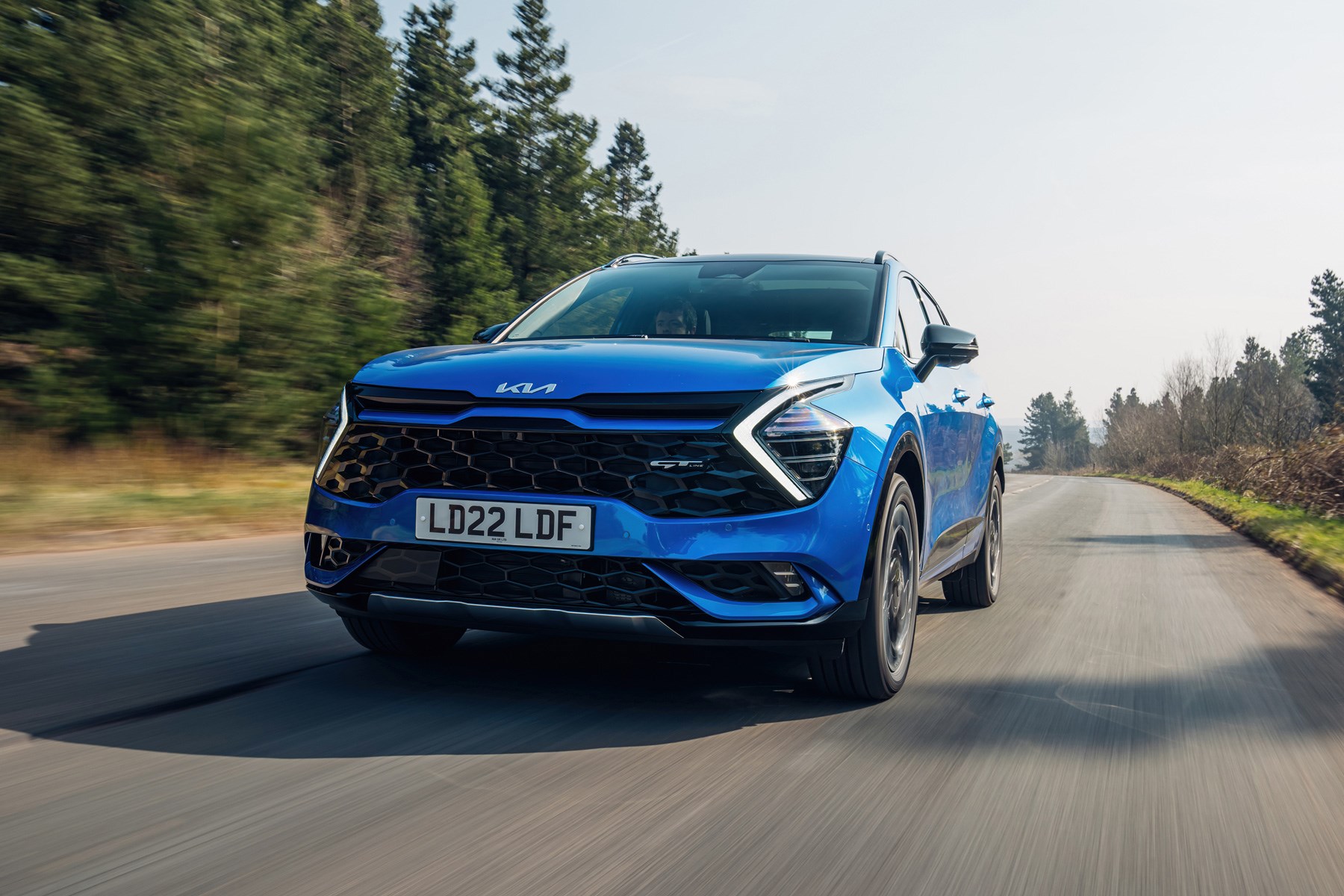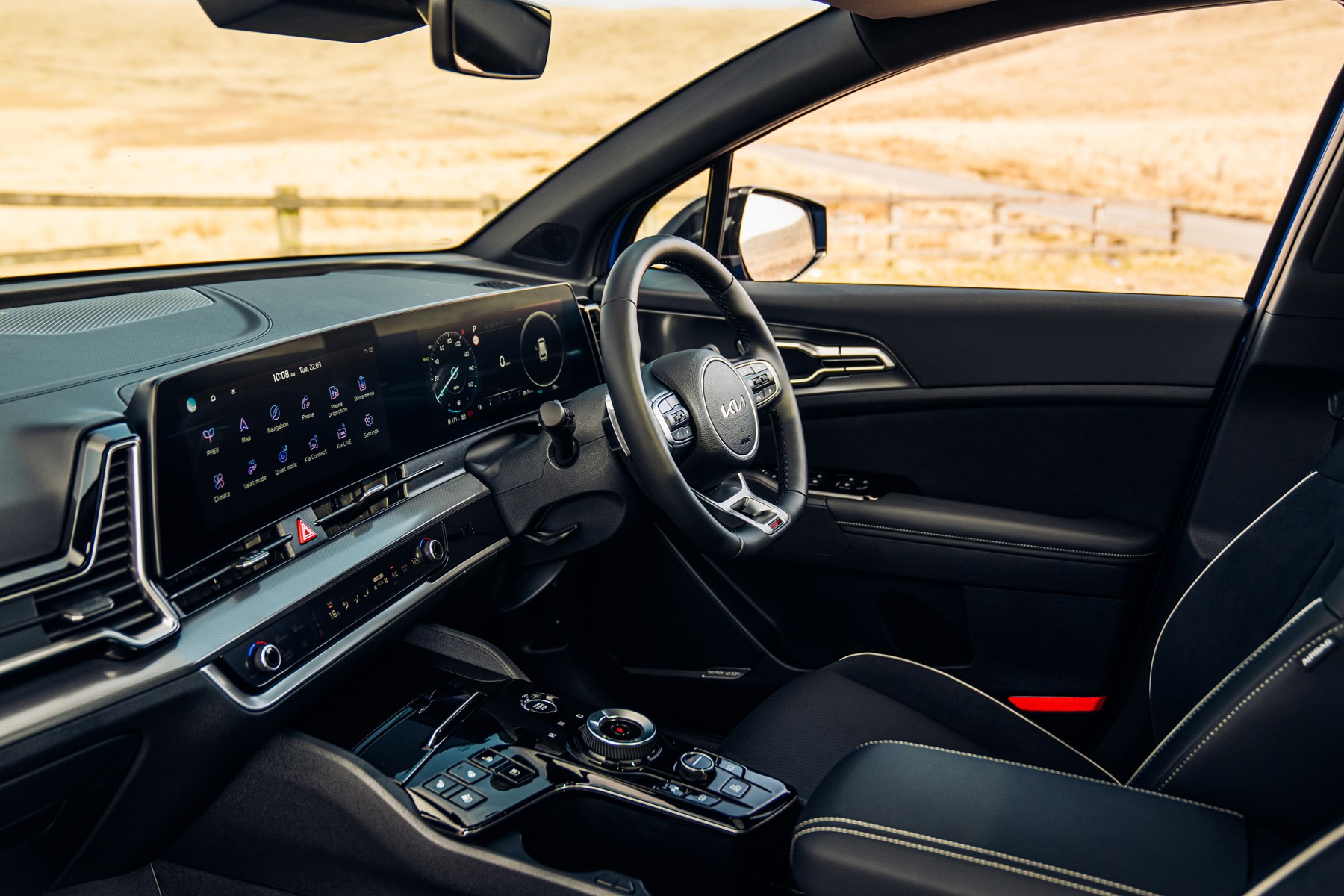► Spacious, well-equipped and quiet
► Real-world fuel economy of around 80mpg…
► … but only if you keep the battery topped up
Kia has taken a confident step upmarket with the new Sportage. The car’s quality and technology has improved dramatically over the previous-generation model – now, the SUV is fighting for space with the Volkswagen Tiguan and Mazda CX-5 rather than more affordable alternatives such as the Nissan Qashqai and Vauxhall Grandland.
This new plug-in hybrid version of the Kia Sportage adds another string to the SUV’s bow, offering impressive real-world fuel economy figures, low CO2 emissions and a company car pricing that blows the equivalent Volkswagen Tiguan eHybrid out of the water.
Yes, it’s unusual for us to even bother mentioning finance – but the deal is so good, we thought you ought to know about it. We won’t bore you with it for too long, we promise.

Here’s the short version. The Sportage PHEV’s benefit-in-kind rate comes in at eight percent, which is considerably less than almost all of its competitors. That means you’ll be a lot better off in the top-spec Sportage GT-Line S PHEV than you would be in the flagship Volkswagen Tiguan eHybrid R-Line, for example, which has a BiK rating of 14 percent.
It looks a bit less appealing when you consider the Sportage PHEV’s cash price. Our GT-Line S test car was priced at £43,795 on the road, which is more than £3,000 more expensive than the most expensive Volkswagen Tiguan eHybrid.
Even the next cheapest Sportage 4 is around £1,800 more expensive than the Tiguan R-Line – and prices for the two cars only level out at the lower ends of their pecking orders with both just eking under the £40,000 threshold. However, Kia’s PHEV system is a lot better than Volkswagen’s system, which helps explain the difference in price.
Elaborate on that. I’m sick of this finance twaddle
Put it this way – if you want a family SUV that’s tooled-up for the driver (which sounds like an oxymoron, but they are out there), go for the Mazda CX-5 or the SEAT Ateca. If you just want something big that’ll waft you around in comfort, go for the Kia Sportage PHEV.
In Eco mode, the PHEV system operates in a sort of “super hybrid” mode. It’s much keener to disengage the petrol engine and run the car on electric power alone than the likes of the Vauxhall Grandland Hybrid4 or the Volkswagen Tiguan eHybrid, which means the cabin is a very quiet place to be.
You can also force the system to run on electric power alone – and it’ll happily push the car up to 60mph without any interference from the petrol engine. That is, providing you don’t mash your foot through the firewall like a neanderthal. Be gentle with the throttle, and you should be able to come close to Kia’s claims of a 43-mile electric-only range.

There are some drawbacks, though. For starters, it’s almost 400kg heavier than the standard petrol-powered Sportage thanks to the battery pack and the electric motor – and you can feel that difference on the road. There’s a fair bit of roll if you pitch it into a corner hard, and the chassis feels like it’s working a lot harder to control the body.
The damping is quite firm, too, which means the car can get into a swaying rhythm on slow, rutted back roads, jigging you around in your seat all the while. This issue is aggravated further by the enormous 19-inch alloys on the GT-Line S model. Thankfully the ride smooths out once you’re up to speed – it’s a very comfortable cruiser on the motorway.
Kia’s PHEV system also has a surprising amount of poke. The 1.6-litre petrol engine and electric motor have a combined output of 261bhp and 258lb/ft of torque, which Kia says is enough for a 0–62mph time of 7.9 seconds. In-gear acceleration is reasonable, too – and you get four-wheel drive, which inspires a bit more confidence in poor conditions.

There’s a caveat, though – you won’t extract any sort of performance from the Sportage PHEV in Eco mode. In that setting, the throttle is about as dull as a four-hour lecture on the various species of Amazonian moss, while the gearbox is less responsive than a hungover teenager. Sport mode makes the Sportage a lot more sprightly.
But there’s also a caveat to the caveat. If you’re regularly running the Sportage PHEV in Sport mode, your fuel economy will decrease dramatically. Keep the selector locked in Eco mode, and you’ll be able to screw 80mpg out of the powertrain without really trying, providing you keep the battery pack charged up.
If you’re constantly ragging around in Sport mode, you’ll be chewing through your electricity faster, which means the petrol engine has to work harder to keep the car moving, which burns more fuel, which means you spend more money at the pumps. We saw the economy gauge dip as low as 25mpg after a particularly spirited driving stint.
Eco mode unless overtaking. Got it. Anything else I should know?
Bouncy low-speed ride aside, the Sportage’s interior is a bloody lovely place to be. It’s more than a match for its German rivals in terms of quality, and the range-topping GT-Line S model has more equipment than most drivers will know what to do with.
Heated steering wheel? Check. Heated rear seats, so the kids don’t whinge about being cold on winter morning school runs? Oh yes. A fancy adaptive cruise control system that can automatically creep the car along in stop-start traffic jams? Obviously.

The ergonomics are great, too. I’m a funny shaped bloke – I’m tall, but my legs are a lot longer than my arms, which means I often have to choose between overreaching for the wheel or scrunching my legs up under the dashboard. But there’s enough adjustment in the Sportage’s column and seats for me to get comfortable, so normal folk should be fine.
There’s also tons of space in the back, with even six-footers finding enough space for their legs and heads. The PHEV poewetrain does eat into the Sportage’s boot space, though – but this is a necessary evil. The electric gubbins needed to go somewhere, and Kia decided the best place for them was under the boot floor. Capacity falls from 591 litres in the standard petrol-powered model to 540 litres in the PHEV as a result.
Kia Sportage PHEV: verdict
The Kia Sportage PHEV is a well-rounded package, offering a long electric-only range, good fuel economy and more technology than you can shake an iPhone at. Pair that with good company car finance deals and a cabin that’s more than spacious enough to keep the family happy, and it looks like a very compelling offer indeed.
Cash buyers might be put off. The top-spec GT-Line S variant we tested is around £3,000 more expensive than the range-topping Volkswagen Tiguan eHybrid. The Sportage’s low-speed ride also suffers because of those massive 19-inch alloy wheels. They look great, but if you live down a narrow country lane, see if your Kia dealer can fit the smaller 18s.